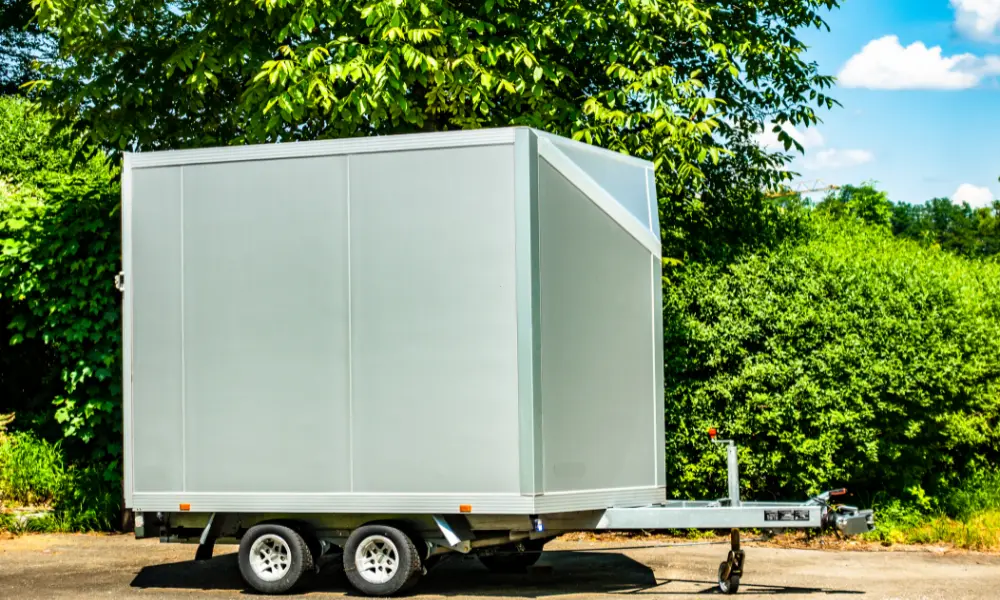Moving to Nevada or already living there and unsure about your vehicle inspection requirements? Nevada vehicle inspections can seem daunting, but knowing what’s required will make the process smoother. Whether it’s a VIN inspection or an emissions test, you need to stay informed to avoid penalties. Follow our guide to understand everything you need to get your vehicle properly inspected and on the road without hassle.
Eligibility for Vehicle Inspection
To ensure that your vehicle meets Nevada’s standards for emissions and safety, you’ll need to know if your car is eligible for inspection. Understanding the specifics can help you navigate requirements like exemptions and certain special cases that may apply to you.
New Vehicles and Temporary Permits
If your car is new, you might not need an emission test right away. In Nevada, new vehicles are exempt from emission inspections for the first three registrations. After that, your car will need to undergo testing.
If you’re waiting for your registration to be processed, temporary movement permits allow you to drive legally. These permits often last for up to 60 days, giving you enough time to have all necessary inspections and paperwork completed.
Important Note:
- Temporary permits are valid for short term use only.
- New vehicles become subject to inspections after the third registration.
Exemptions and Waivers
Certain vehicles are exempt from inspection requirements. For instance, electric vehicles and hybrids are exempt for five model years. Additionally, if your car is a classic vehicle like a Classic Rod or Old Timer model, it might qualify for a classic vehicle exemption.
Vehicles from 1967 or older generally do not require emission tests. Military personnel stationed in Nevada also often receive exemptions, especially if their vehicle is registered out of state.
Summary of Exempt Vehicles:
- Electric Vehicles
- Hybrids (exempt for five model years)
- Classic Vehicles such as Classic Rod or Old Timer
- Vehicles from 1967 or Older
- Military personnel’s vehicles
Special Cases
Special circumstances may change your inspection requirements. For example, if you move to Nevada, you must register your vehicle within 30 days. As a New Nevada Resident, you’ll need to get an emission test if applicable.
Vehicles with waivers might also be excused from passing strict emission tests for a limited time due to repair costs or temporary conditions. Movement permits help in these situations, allowing your car to be on the road legally while you sort out inspection details.
Special Case Factors:
- New Nevada Residents need prompt registration and inspection.
- Waivers may be available for cars undergoing repair.
- Movement permits offer temporary legal driving status.
By understanding these specific requirements, you can make sure your vehicle stays compliant with Nevada’s inspection laws.
Pre-Inspection Requirements
Before you take your vehicle for an inspection in Nevada, there are a few important steps you need to complete. These include verifying your insurance and gathering all necessary documentation and identification.
Insurance Verification
Before you head to the DMV for a vehicle inspection, you need to ensure your vehicle is properly insured. Nevada law requires you to have proof of insurance. Your Evidence of Insurance must show the vehicle identification number (VIN) and current coverage details.
If you don’t provide Proof of Insurance, you won’t be able to proceed with the inspection. Make sure your insurance policy is active and up-to-date. When in doubt, contact your Insurance provider to verify coverage.
Documentation and Identification
Apart from insurance, you need to have the right documents and identification ready. You’ll need a completed Application for Vehicle Registration (VP 222). Ensure that this form is filled out accurately, reflecting your vehicle’s current details.
You will also need to bring your Driver License and ensure your Vehicle Identification Number (VIN) is correct. Some vehicles may require a VIN inspection, so check the DMV website to see if this applies to you.
Keeping your paperwork organized will make the pre-inspection process smoother and quicker. Collect all required documents in a folder to keep them handy.
Types of Vehicle Inspections
In Nevada, there are two main types of vehicle inspections you need to be aware of: emissions testing and safety and VIN inspections. Each serves a specific purpose to ensure your vehicle meets state standards.
Emissions Testing
Emissions testing helps reduce air pollution by measuring the amount of hydrocarbons and carbon monoxide your vehicle releases. This is mandatory for gasoline-powered and diesel-powered vehicles located in urban areas such as Clark and Washoe counties.
- Smog Check: These tests are required before you can register your car. New cars are exempt for the first three registrations, while hybrids are exempt for five model years.
- Emissions Tests: Valid for 90 days, these tests must be done annually. They measure the levels of smog pollutants your vehicle emits.
- Remote Areas: If you live in more remote areas of Nevada, these tests might not be necessary.
Safety and VIN Inspections
Safety and VIN inspections are crucial for verifying your vehicle’s identity and ensuring it meets the state’s safety standards.
- VIN Number: The Vehicle Identification Number (VIN) inspection is used to verify the car’s ID. This can be done by a law enforcement officer or at an authorized inspection station.
- New or Used Car: All vehicles, whether new or used, must undergo a VIN inspection. You also need this if you’re new to Nevada and registering your car.
- Professional Inspectors: Only authorized personnel at specific stations or law enforcement officers can complete these inspections.
Understanding these requirements will help you keep your vehicle compliant with Nevada’s laws.
Inspection Locations and Scheduling
When you need to get your vehicle inspected in Nevada, it’s important to find a convenient location and understand how to schedule an appointment. Knowing where to go and what to expect can save you time and effort.
Finding an Inspection Station
In Nevada, emissions testing is available at many privately-owned inspection stations. These are decentralized, meaning you have several options to choose from. If your vehicle is in areas like Las Vegas, Washoe County, or Clark County, you can locate a station nearby.
For emissions testing, locations like the DMV Emissions Lab in Las Vegas and Reno are good options. You can also complete a VIN inspection through any authorized retailer or law enforcement officer, who will sign and provide badge numbers on the inspection form.
Appointment and Waiting Times
You might need an appointment to get your vehicle inspected at many locations. It’s easy to skip the DMV line by scheduling through the Nevada DMV website. This allows you to find a time that works best for you and reduce waiting times.
Typically, inspections are quick, but planning your visit during non-peak hours can help. In busy areas like Clark County, wait times can vary. Consider using the DMV app for online fee estimates and to see the busiest times at your preferred location. This way, you can plan ahead and ensure a smoother experience.
Using these tips, you’ll have an easier time navigating the inspection requirements in Nevada.
Inspection Process and Checklist
Getting your vehicle inspected in Nevada involves several key steps and requirements. You’ll need to know what documents and information to prepare, as well as what to expect during and after the inspection.
Step-by-Step Inspection Guide
First, gather all necessary documents like your Vehicle Inspection Certificate, Current Odometer Reading, and proof of vehicle registration. Make sure your driver’s license is also up to date.
Head to an approved inspection station. For a VIN inspection, be ready to provide details like the make, model, and Vehicle Identification Number (VIN). For emission tests, vehicles like hybrids and alternative fuel vehicles have specific guidelines. Most passenger cars, trucks, and SUVs need an emissions test before registration.
During the test, they’ll check for a working Check Engine Light, visible smoke, and tampering of any emission devices. Hybrids are usually exempt for the first five years. The entire test usually takes less than an hour and is valid for 90 days.
Dealing with Inspection Failures
If your vehicle fails the inspection, you’ll receive a detailed report of the issues, such as a faulty Check Engine Light or excessive levels of pollutants. The report will guide you on the necessary repairs.
Take your car to a certified repair shop to fix the issues. If your vehicle falls under the manufacturer’s warranty coverage, some repairs might be free.
For issues like emission device tampering, significant repairs might be needed. Once the repairs are done, a re-inspection is required. The test fees vary but are usually affordable.
In case of repeated failures, you may be eligible for financial assistance through Nevada’s Emissions Control Program. This can help cover the cost of necessary repairs to meet state requirements.
Post-Inspection Procedures
Once your vehicle inspection is complete, you’ll need to handle a few additional steps to ensure your vehicle is fully compliant and legally registered. This involves completing your registration and dealing with any rejections that may arise.
Completing Registration
After passing the inspection, you need to proceed with your vehicle registration. Make sure you have all necessary documents, such as the Emission Vehicle Inspection Report and your proof of insurance.
Head to the Nevada DMV to finalize the process. You might need to renew your registration if it is close to expiring. Bring any required fees, which may include fees for new license plates or other charges.
If your vehicle is eligible for tax exemptions, ensure you have the proper forms filled out. For specific types of vehicles like motorcycles or Tri-Mobiles, check with the DMV for any additional requirements. Motor carriers may have additional procedures to follow.
Dealing with Rejections
If your vehicle fails the inspection, you’ll need to address the issues noted in the report. Items that might cause rejection can include emissions failures, faulty equipment, or missing parts.
Once the necessary repairs are done, schedule a re-inspection. Most inspection stations will provide guidance on what repairs are needed. Make sure to keep all receipts for any repairs done, as you might need to show them during the re-inspection.
Depending on your vehicle type, such as motorcycles or tri-mobiles, the re-inspection procedures might be slightly different. Consult the Nevada DMV or inspection station for specific requirements related to your vehicle.
By carefully following the steps for dealing with rejections, you can ensure your vehicle meets all regulatory standards and is ready for successful registration.















